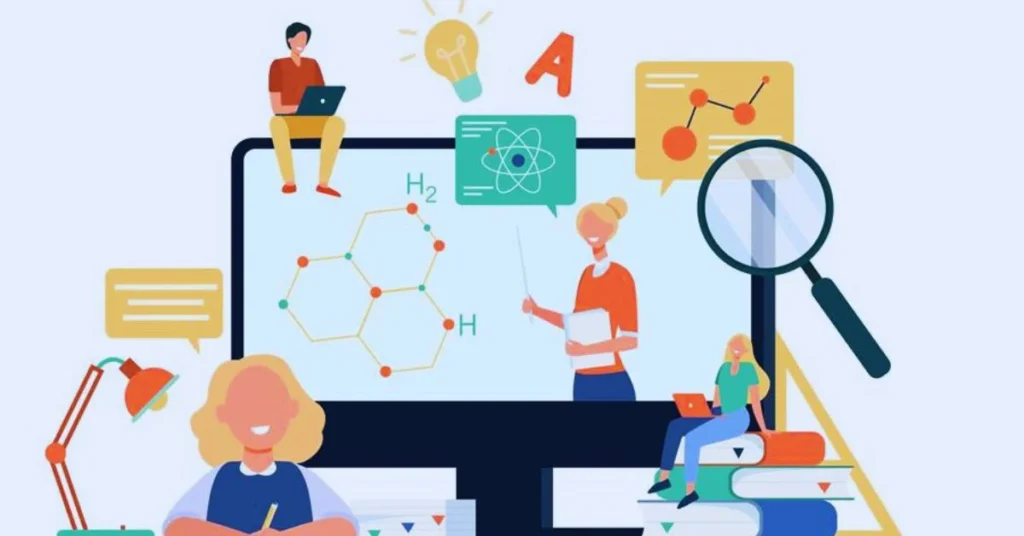How Technology Is Changing Education in 2025
Introduction
The question of how technology is changing training has grown to be one of the most mentioned topics in recent years. Over the past few years, the era has revolutionized nearly every aspect of human life — and schooling is no exception. From chalkboards and textbooks to virtual whiteboards and virtual school rooms, how college students study and teachers teach have developed dramatically. Today, generation plays a crucial function in shaping modern training by way of enhancing accessibility, enhancing engagement, and personalizing gaining knowledge of for thousands and thousands of college students around the world.
The Digital Transformation of Classrooms
To understand how technology is converting schooling, it’s important to observe how lecture rooms have converted. Traditional coaching areas are being replaced with smart classrooms equipped with interactive equipment. Instead of relying entirely on printed materials and lectures, teachers now use projectors, pills, and virtual content to make instructions extra enticing. Students can visualize complex standards, resolve issues interactively, and collaborate on initiatives through cloud-based systems. This shift has made mastering more participatory and dynamic than ever earlier than.
Online Learning Platforms and Accessibility
One of the clearest examples of the way the era is changing training is the upward thrust of online learning platforms. Websites and programs like Coursera, Khan Academy, edX, and Udemy have made international-class education available to anyone with a web connection. These platforms offer free and paid guides from pinnacle universities and educators, breaking down obstacles associated with geography and price.
Technology has also enabled faraway gaining knowledge of, a vital advancement throughout activities like the COVID-19 pandemic. Students in rural or underserved areas can now get hold of high-quality training from the comfort of their homes, showing how virtual innovation can absolutely democratize learning.
Personalized Learning Through Technology
Another manner how generation is converting education is through personalization. Modern learning systems use artificial intelligence (AI) and statistical analytics to tailor classes to individual wishes. Tools like DreamBox and Smart Sparrow regulate issue ranges based on pupil performance.
This technique allows each learner to develop at their own pace, making training more inclusive and effective. By figuring out strengths and weaknesses, era enables teachers to create custom mastering plans — a main shift from one-size-fits-all coaching methods.
Also Read: Latest Technology Trends in 2025
Gamification and Interactive Learning
Gamification has become a central part of how technology is changing education. It integrates game-like elements — points, badges, and competitions — into learning environments. Tools such as Kahoot! and Quizizz turn lessons into interactive games, increasing motivation and participation.
This not only makes learning more enjoyable but also improves knowledge retention. Gamified learning encourages problem-solving, teamwork, and creativity, making education both fun and effective.
Collaboration and Communication Tools
Modern communication platforms are another key factor in how technology is changing education. Tools like Google Classroom, Zoom, and Microsoft Teams enable real-time interaction between students and teachers. They also support group projects, virtual discussions, and instant feedback.
These technologies have transformed classrooms into collaborative spaces that mirror real-world workplaces, helping students develop essential digital communication skills alongside academic knowledge.
Virtual and Augmented Reality in Education
Virtual Reality (VR) and Augmented Reality (AR) have redefined how technology is changing education by creating immersive learning experiences. Through VR headsets, students can explore the solar system, perform virtual science experiments, or visit historical landmarks — all without leaving the classroom.
AR apps enhance textbooks by adding 3D models and interactive animations. This type of learning deepens understanding and engagement by allowing students to experience what they are studying firsthand.
Artificial Intelligence and Automation
Artificial intelligence is at the core of how technology is changing education today. AI-powered systems provide personalized tutoring, automated grading, and instant feedback. Chatbots and virtual assistants can help students find information, track assignments, and solve academic queries efficiently.
AI analytics also predict student performance, helping educators intervene early when learners face difficulties. This intelligent support system creates a more efficient and adaptive educational experience.
Bridging the Gap in Global Education
A major way how technology is changing education is by reducing global inequalities. Mobile learning applications, digital classrooms, and affordable devices are bringing education to remote and underprivileged communities. Programs like One Laptop per Child and UNESCO’s Global Education Coalition aim to make digital learning universal.
However, challenges such as unequal internet access and a lack of digital literacy persist. To make this transformation inclusive, efforts must focus on bridging the digital divide and ensuring every student benefits from educational technology.
Challenges and Limitations
While exploring how technology is changing education, it’s important to recognize the challenges it brings. Overreliance on screens can cause fatigue, and data privacy remains a serious concern. Not all educators are fully trained to use advanced digital tools, leading to inconsistent teaching outcomes.
Schools must invest in teacher training, cybersecurity, and digital infrastructure to overcome these barriers. Balanced use of technology ensures that innovation complements — not replaces — traditional learning values.
The Future of Education Technology
The future of how technology is changing education looks promising and innovative. Trends like AI-driven adaptive learning, blockchain-based academic credentials, and lifelong learning ecosystems are redefining how people gain and verify knowledge.
As industries evolve rapidly, students must develop digital fluency, creativity, and problem-solving abilities. The classroom of the future will likely be a hybrid model — blending in-person learning with virtual tools for maximum flexibility and engagement.
Conclusion
Understanding how technology is changing education helps us appreciate how far learning has come — from static textbooks to interactive, personalized, and global experiences. Virtual classrooms, AI tutors, gamified lessons, and online courses are transforming education into something more inclusive and exciting.
Although challenges like accessibility and privacy remain, the benefits are undeniable. Technology is not just a supplement to education — it is its future. By embracing digital innovation, we are creating a world where learning is limitless, connected, and tailored to every student’s potential.



